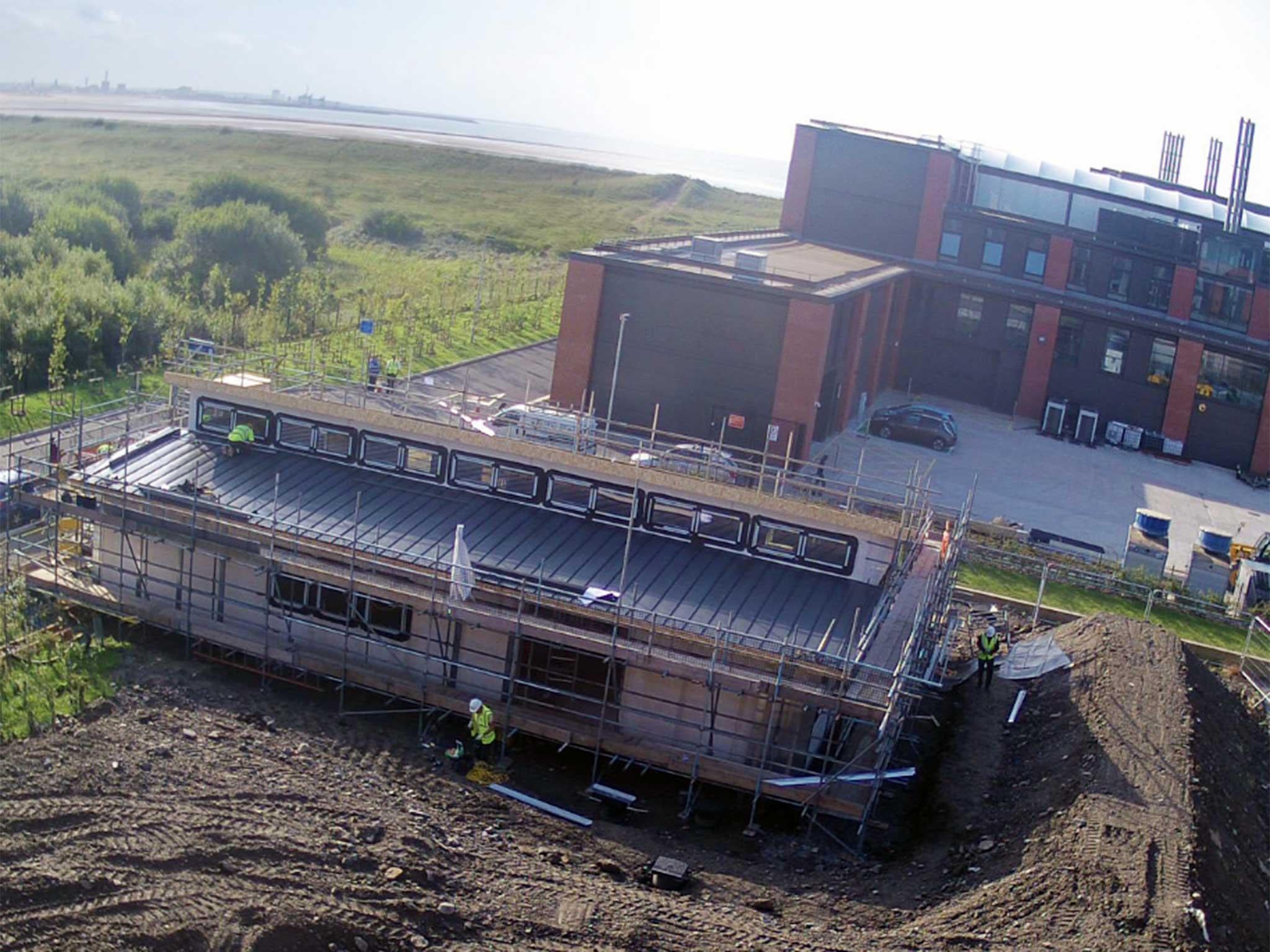The building that could end the war over the office thermostat and abolish fuel poverty
The heating system for the entire structure uses the same amount of power as five old-fashioned, incandescent light bulbs

Your support helps us to tell the story
From reproductive rights to climate change to Big Tech, The Independent is on the ground when the story is developing. Whether it's investigating the financials of Elon Musk's pro-Trump PAC or producing our latest documentary, 'The A Word', which shines a light on the American women fighting for reproductive rights, we know how important it is to parse out the facts from the messaging.
At such a critical moment in US history, we need reporters on the ground. Your donation allows us to keep sending journalists to speak to both sides of the story.
The Independent is trusted by Americans across the entire political spectrum. And unlike many other quality news outlets, we choose not to lock Americans out of our reporting and analysis with paywalls. We believe quality journalism should be available to everyone, paid for by those who can afford it.
Your support makes all the difference.Not far from the beach on Swansea Bay, a revolutionary new building is taking shape that it is claimed could end fuel poverty and solve the war over the thermostat in offices.
For the "Living Classroom", which construction workers are hurrying to complete before the start of term at Swansea University, is a building that integrates an array of cutting edge renewable energy technology.
It generates its own electricity from the sun, which is then stored in batteries made with saltwater – that might help put out a fire, rather than starting one – and also absorbs and redistributes solar heat.
But the scientists, architects and engineers who designed it believe one feature in particular could be used to help companies save money, cut greenhouse gas emissions and end squabbles over the thermostat.
The underfloor heating system uses panels coated with a special paint. When a harmless low-voltage electric current is passed through the paint, it heats up.
The result is a heating system for each individual desk.
Professor Dave Worsley, one of the team behind the building, the subject of a talk at the British Science Festival in Swansea, said: “It’s right by your feet. It heats up very quickly and cools down very quickly.
“If your feet are warm, the rest of you feels much better.
“And each set of floor tiles is individually adjustable. So if you are someone who has cold feet, your desk area around you can be warmer than someone like me who’s permanently sweating.”
He compared this to the traditional office he currently uses.
“In the winter months many of the ladies and probably some of the gentleman have a five kilowatt radiant heater under their desk to keep their feet warm,” he said.
“That’s neither energy efficient nor safe.
“When you actually fit a building out in that way, it ends up saving you money because the heating is only going to be used where people are in the building and where they are sat.”
In addition to generating and storing its own electricity, the building’s heating system uses very little electricity – the equivalent of just five incandescent light bulbs.
The batteries gradually lose some of the stored power – but this is given off in the form of useful heat.
Capable of storing enough power to heat the building, being built at the SPECIFIC Innovation & Knowledge Centre, for a few days and a typical home for up to a week, the batteries can also be used to buy power from the grid at night when it is cheap.
The building costs about 10 to 20 per cent more than a traditional design, but the team behind it believe similar methods could be used in social housing.
“Fuel poverty is a substantial issue in Wales and if you have a house that is a power station, then they [the occupants] are not in fuel poverty,” Professor Worsley said.
“They are never going to have to worry about electricity and heating. That has other benefits in social terms because the money people do have can then be spent on things like food and other living costs.
“It removes something that will be a huge stress on people’s lives just by making a building in a different way.”
Join our commenting forum
Join thought-provoking conversations, follow other Independent readers and see their replies
Comments